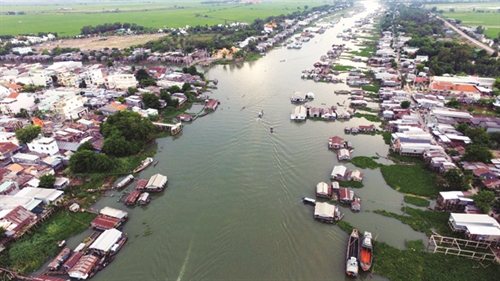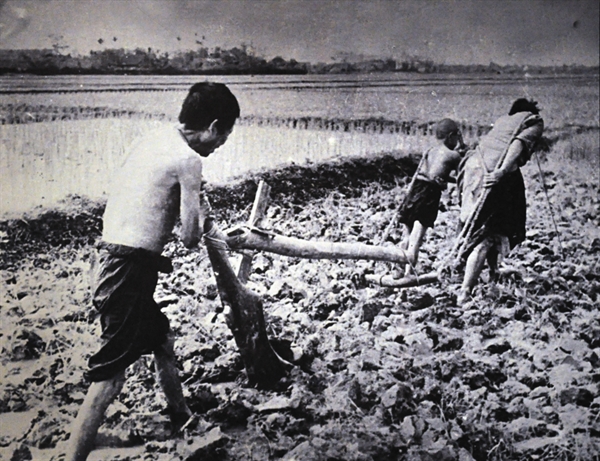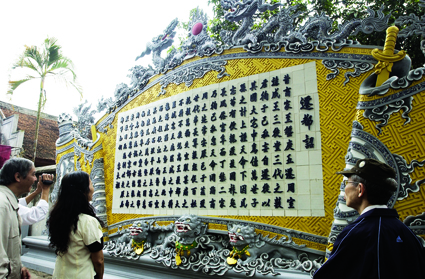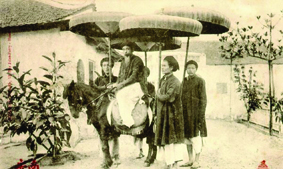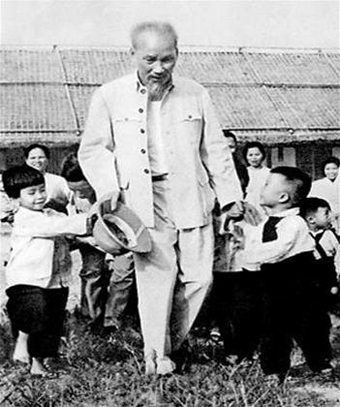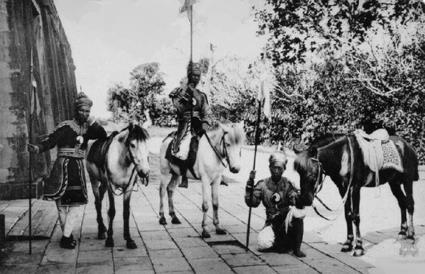Having appeared latest on Vietnam’s political map at the end of the 17th century but with the earliest modern administrative organization in Vietnam from the 19th century under the French rule till the August 1945 Revolution, Cochin-China, which encompasses the southern region of Vietnam, saw the most distinctive process of formation and development of the state organization in the national history.
This writing analyzes the basic characteristics of the state administration in the history of southern Vietnam through various major periods from the beginning of the Christian era to before 1945, serving as historical references for the ongoing reform of organization and operation of the state apparatus in today’s Vietnam.
Associate Prof. Dr. Nguyen Thi Viet Huong
Institute of State and Law, Vietnam Academy of Social Sciences
Cochin-China, like other parts of Vietnam, has gone through a long glorious history of construction and development. From the early Christian era to 1945, the political institution in general and the state administration organization in particular in this region were characterized by many specific features. These prominent, unique and important elements existed long and differed from those in other areas within a unified territory. Although it is hard to answer the question which are the dominant features of the entire 2,000-year long history of Cochin-China’s state administration, it is possible to identify the most striking and important ones in the creation of its distinctive physiognomy.
1. The organization and operation of Cochin-China’s administration explicitly reflected the characteristics of its socio-economic structure.
Generally, the socio-economic structure governs the formation and development of every state organization. In Cochin-China, the unexpected changes of the socio-economic structure due to the continuous and vigorous developments of the region’s historical process left deep imprints on its state administration.
At the dawn of its history, the elements of a commodity economy strongly developed, thus giving rise to Cochin-China’s unique ownership as well as class relations, hence the peculiarities of the state administration of a region named Phu Nam then, which developed largely on the basis of taxes collected not only from farming but also from handicraft and trade activities. As a result, the state did not need a highly centralized model or a well-organized administrative system, but focused on setting up tax collection points and a coercive (military and legal) tool strong enough to protect its interests from this source of revenue. That was a reasonable choice in such a socio-economic environment.
During the 16th and 17 centuries, northern Viet people migrated to the South, bringing along new ideas on ownership and socio-economic structure. They developed an agricultural economy based on large-scale reclamation and ownership of land. The social structure was founded on the basis of relations between migrating peasants who had liberal and adventurous ideas, courageous and rash characters as well as a nostalgia of their northern native places. These changes led to the organization of hamlets bearing the traditional image of northern ones. It was from these initial hamlets, the Nguyen Lords established grassroots administrative units with many traits of the northern region. The power ties between the Nguyen Lords’ central administration and southern administrative units were loose, based on an open structure of each administrative unit. The central administration did not deeply interfere in internal affairs of hamlets and communes, but gave them freedom to manage their own affairs and fulfill their obligations to the state.
During the reign of the Nguyen dynasty, Cochin-China continued developing on the basis of the previous socio-economic structure, with agriculture playing the key role and trade developing most vigorously as compared to other regions of the country. The social structure was complicated with various sections and strata, which, however, started expressing their aspiration to obey the unified management by the central administration in hopes of increased stability and economic development.
The French colonialists’ invasion of southern Vietnam and colonial rule deformed the entire former administrative structure on the one hand, and gave rise to a new administrative structure on the other as a result of their colonial domination and exploitation policies. The ownership relationship was typified by the preliminary formation and development of private ownership of capital. There appeared in Cochin-China totally new social forces. In his article titled ‘Southern Vietnam’s social structure in modern time’ in the book “A number of historical issues in southern Vietnam during the modern time” published by the Vietnam Association of Historical Sciences, page 168, Nguyen Dinh Le wrote: “A section of the rich bourgeoisie participated in politics fairly early and organized a number of political parties.” Such a socio-economic environment created a structural model of a colonial administration commonly applied in French colonies, which bore a number of elements of bourgeois democracy but was still influenced by southern Vietnam’s then existing traditional institutions. This patched-up structure of the southern administration reflected rather truthfully the patched-up socio-economic structure of Cochin-China in that period.
2. Southern Vietnam’s state administration was characterized by diversity and instability.
The politico-legal form of administration that appeared for the first time in southern Vietnam was basically scattered monarchy, which developed toward gradually concentrating power into the hands of the central administration headed by the king.
With their policies of migration of people for land expansion and use of military forces to protect the new land, the Nguyen Lords organized a peculiar administration for southern Vietnam from the 17th to early 19th centuries, namely the politico-military administration with the participation of army generals in the state administration. These generals were the mainstay of the monarchical state, holding military command at administrative units to protect and expand land and organize military plantations on newly reclaimed land while representing the monarchical administration to perform the state administration function in areas under their charge, mainly collecting tax.
The unification of the whole country and the establishment of the Nguyen kingdom led to the unification of the politico-legal structure throughout the national territory. Southern Vietnam incrementally joined the unified administration of the whole country and became a component of the Nguyen monarchy. Yet, even during this period, the politico-military feature in the organization and operation of the region’s administration did not completely disappear.
However, with the French colonialists’ invasion and domination, southern Vietnam was once again separated and the administration structure was once against greatly changed, with the introduction of the simplified elements of a bourgeois democratic institution under the colonial politico-legal structure into the region. These elements co-existed with the fading political elements of the feudal monarchy and even with the inherent elements of traditional political institutions being in the process of dissolution.
Although diversity and instability are prominent characteristics of the state administration in Cochin-China’s history, the politico-military model remained to be its most typical and common form as clearly seen in the model’s long existence as well as its profound and clear-cut components. The role of the army and the positions of army generals prevailed in almost all aspects of state management throughout the Nguyen Lords’ rule. In other periods of southern Vietnam’s development, the army and military chiefs always occupied an important position in the organization and operation of the state administration.
Nevertheless, it should be noted that the appearance of the politico-military state model in southern Vietnam did not mean the absence of civil administrative organizations. These organizations still naturally existed to perform specific tasks related to tax collection and socio-economic development as well as administrative procedures.
3. Southern Vietnam’s administration always existed with differences but was not dissociated from the administration system in the country.
In the early days of history, Cochin-China’s state administration was organized similarly to Van Lang-Au Lac administration in the North and Lam Ap-Cham pa administration in Central Vietnam, which had just developed from the clan-commune regime with clan and community ties based on the small-scale private ownership. From the third century Cochin-China became the heart of Phu Nam kingdom where the state administration was organized in the form of scattered monarchy.
Later, Phu Nam was invaded by a neighboring kingdom called Chan Lap, thus became isolated from the regional political life. Meanwhile, northern Vietnam was ruled by Chinese feudalists for 1,117 years with its politico-legal state administration organized after the Chinese model, and Central Vietnam under Cham pa remained to be an independent state with certain politico-legal characteristics common in Southeast Asia. The disparities in the politico-administrative structure led to wider socio-economic gaps between Cochin-China and other regions of Vietnam.
The disparities in the politico-administrative structure persisted even when Viet people spread south, established sovereignty over Cochin-China and incrementally built up a managerial apparatus there. At the end of the 17th century, when the first administrative units were set up by Viet people in southern Vietnam, the administration in northern Vietnam under Le king-Trinh Lords had become a complete unified system as a bureaucratic centralized monarchy. Meanwhile, southern Vietnam under the Nguyen Lords’ rule enjoyed a different status with a separate and special politico-administrative structure.
After the national reunification in 1802, the Nguyen dynasty applied the southern politico-military model to northern Vietnam though in a different form and for only a short period of time until an administrative reform was initiated by King Minh Mang. After such administrative reform, southern Vietnam’s state administration was integrated into the national administration, which was organized similarly to those in other regions of Vietnam, with a striking difference in grassroots-level units, which were communes in the North and Central Vietnam, and hamlets in the South.
During the French colonialists’ domination, the difference in the form of state organization between southern Vietnam and other parts of the country was extremely manifest. With the politico-legal status reserved for colonies, the state administration in southern Vietnam was modeled after the colonial administration, totally different from the “protectorate” status in northern and central Vietnam. The French colonialists considered Cochin-China an overseas French land, headed by a Governor who directly reported to the French President. The socio-economic development policies of southern Vietnam were proposed by economic, social and educational advisory councils to the Governor for decision. The true masters of southern Vietnam were the French while the Vietnamese did not play any role in the local administration. On the contrary, northern and central Vietnam were French protectorate where the Nguyen administration still existed alongside French officials.
The difference in the organizational form of administration between southern Vietnam and other regions of the country does not mean its disassociation from the national administrative system. On the contrary, southern Vietnam’s administration constituted an inseparable part of the national administration system, as clearly manifested below:
First, from the second half of the 17th century, Cochin-China, in its capacity as a sovereignty of a unified center of power, was unable to develop by its own way toward an independent political institution separate from other territories. In reality, Cochin-China was structured as an administrative unit and had a managerial model under the general principles of the rulers.
Second, in history, Cochin-China was a region far from the center but always controlled by and tied in various forms to the center of power. Even when the rulers applied the most relaxed control policies, their macro-management of Cochin-China remained strict. In other words, despite the application of various controlling mechanisms and forms, the politico-legal life in southern Vietnam was always attached to that in other parts of the country.
Third, Cochin-China became a tightly organized administrative region mainly as a result of land reclamation and hamlet formation by various ethnic groups, of whom the Viet people migrating from northern Vietnam played the key role. In the course of land reclamation and settlement in the new land, the Viet people always bore in mind the images of their traditional villages and communes in the North, thinking of a unified nation composed of their residential units. Therefore, the similarities between southern hamlets and northern villages and communes can be observed though they may be different in name, organizational scale, managerial structure, and relation with the superior administration. Despite its open structure as well as the loose control by the central administration, Cochin-China’s spirit of attachment to the central administration was always the leading and self-imposed trend in its relationship with the entire nation.
4. Southern Vietnam’s administration was characterized by an open structure influenced by various organizational forms of administration.
The open structure of Cochin-China’s administration apparatus is easily noticeable. This feature resulted directly from the process of incremental establishment and consolidation of the administration in the region, which occurred simultaneously with the process of smooth exchange with politico-legal cultures in neighboring regions. As a newly reclaimed land, Cochin-China step by step integrated into the national administration throughout a long history. It can be said that before falling under the rule of the Nguyen Lords, southern Vietnam was but a primitive land without its own politico-legal nature; hence, it was easily receptive to novelties. The openness of the politico-administrative structure was further increased due to bustling activities in the region accommodating a commercial port and a strongly developed commodity economy.
Unlike the northern region, which was less influenced by Southeast Asia’s politico-legal model, southern Vietnam, due to its special geographical position and most importantly to its open culture, bore fairly clear imprints of Southeast Asian politico-legal model, which, however, never became orthodox.
Migrating to southern Vietnam in a circumstance when ancient Southeast Asian states gradually disintegrated one by one, the Viet people possessed the Confucian atheistic ideology as their advantage to avoid religious and ethnic conflicts on their way of southward expansion. However, the contacts with Cham, Khmer and Chinese political refugees during the 17th and 18th centuries, then economic migrants in the 19th and 20th centuries, exerted strong impacts on the region’s social institutions, including the state institution of the Viet people. The local state administration then was characterized by the politico-military regime, which was similar to Southeast Asia’s politico-legal model with very simple administrative techniques and few regulations and procedures.
With the French colonialists’ imposition of colonial status on Cochin-China from 1862, southern Vietnam’s state institution developed through a totally different orbit in all aspects: the rule of law ideology and legal system, principles of state organization and structure, contingent of administrative officials, etc. In social and historical aspects, the western bourgeois politico-legal model exerted positive impacts on the development of the state institution in Cochin-China though the enslaving nature of the colonial state greatly restricted the objective results of the bourgeois democratic administrative system in the region before the August 1945 Revolution. In many aspects of socio-economic life, the incomprehensive and unthorough substitution of the feudal state institution by the bourgeois democratic institution also left many lingering consequences.
5. The relationship between the center of state power and southern Vietnam’s administration was basically a loose one.
The loose relationship between the central administration and Cochin-China can be seen through the fact that the process of land encroachment and hamlet formation by various ethnic groups as well as the process of establishing their sovereignty over Cochin-China did not face any resistance from Chan Lap’s central administration. Under the Nguyen Lords’ rule, a relaxed ruling status was applied to Cochin-China as clearly manifest in the relationship between the central administration and local administrative units which were imposed only with two most important duties:
(1) performing the military services for frontier defense and standing ready to intervene in Chan Lap when so ordered; and (2) collecting tax.
Though the concentration of power into the central administration was much higher when Cochin-China was placed under the unified Nguyen dynasty as well as under the French rule, it can still be seen that Cochin-China always tended to be more independent than other regions of Vietnam. The French colonialists even failed to strictly control the grassroots administrative units’ organization and operation via a general structure of their colonies and had to maintain the status of self-management given to southern hamlets and accept the traditional management apparatus in the hamlets, through which they carried out exploitation activities.
6. The function of establishing and preserving the territory always played an important role in the history of organizing the administration in southern Vietnam.
The special process of its formation, development and integration into the unified national politics made the function of establishing and defending its territories a key function of Cochin-China administration at all levels.
In Cochin-China, land reclamation and preservation took place simultaneously even during the period of existence of Phu Nam kingdom, which had been set up on the basis of annexation of neighboring territories to be its colonies and it was Phu Nam itself that declined as it was unable to maintain its territories.
Later, the central administration of Chan Lap kingdom was also unable to control Cochin-China which was turned into a waste and thinly populated land, where inhabitants huddled together in areas convenient for their agricultural production, building of hamlets and preservation of the vestiges of Phu Nam culture. These population groups provided a vivid evidence of Cochin-China’s existence throughout nearly 10 centuries as well as the vitality of Phu Nam culture.
When the Nguyen Lords established sovereignty over southern Vietnam, waste land reclamation was carried out together with military and diplomatic activities for incremental encroachment, building of hamlets, establishment of administrative units and organization of the managerial apparatus. In that process, administrations at all levels in Cochin-China played an extremely important role. The existence of the administration apparatus was the manifestation of, and also the condition for, the assurance of the state sovereignty over newly established territories. The policies of land reclamation, the measures of stabilizing and protecting population, the military activities for land reclamation and protection, etc., were carried out by southern Vietnam administrations at different levels as representatives of the central administration because they were in line with the common interests of the vast majority of Cochin-China population. This historical characteristic contributed to forming a supportive relationship between the administration and population, which also revealed the southern Vietnam administration and population’s rich experience in land reclamation and maintenance. It is a traditional factor of important significance for building and promoting the role of today’s southern Vietnam administration.-
